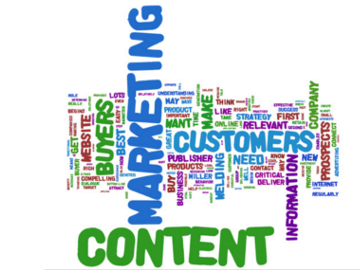Insights
INSIGHTS
All Topics
My Account
Effective digital marketing campaigns for charities
18 Jan 2018by Former Member
Top tips for designing and launching a successful marketing campaign without spending unnecessary cash
When it comes to marketing, digital can be your best friend or your worst enemy. The opportunities available are vast, but so is the competition. With one of your chief aims being to attract the typically shorter attention span of an online audience, digital marketing a charity on a budget can be a tough task. To help, this step-by-step guide will show you how you can design and launch a successful marketing campaign using digital opportunities without spending unnecessary cash.
Main campaign goals
The internet is everywhere and everyone is a part of it — including people and organisations that are competing for your audience. In order to create and effective digital marketing strategy, you must create a chief campaign goal and let it guide everything else you do. Going off-course will make it harder to manage your campaign and keep costs down, while deviating from what makes your charity unique could mean accidentally copying another organisation’s idea. Not good on the notoriously competitive digital field.
So, what is your campaign aim? Whether it’s to achieve a certain fundraising target, improve your site’s authority, drive increased traffic to your site, or boost followers on your social media accounts; anything is achievable. Just ensure that everyone on the campaign is moving towards the same goal and make your objectives precise, measurable and realistic — Google Analytics is an excellent resource if your goal is web-based.
Your campaign audience and what to consider
Digital and print marketing may differ in many ways, but never on the importance of audience research. You need to understand your audience and be aware of social and economic factors that might affect them engaging with your campaign.
No matter which issues you face, being conscious of them means you have a much greater chance of overcoming them without having to start over, which is costly. Use digital tactics to create a typical target audience member. You can find out interests, likes and motivations using your website’s analytics, as well as they’re typical gender, age and location. Who’s following your organisation on Twitter, Facebook and Instagram? These are also people who might engage with your campaign. Do you write blogs? Your Google Analytics data will tell you what type of content is popular on your site, so you have a better understanding of what people are wanting to read from you.
Also, you should utilise social media, such as Facebook and Twitter, to find out which posts/Tweets get likes and which don’t — this also lets you know what content might work in your campaign. Also, don’t forget to make the most your email list. Fire off a survey to these contacts for a better understanding of who they are.
Main message and how to get it out there
Once you’ve researched your audience, you need to adopt the same method to decide on a chief marketing message. What do you want people to think about after you’ve launched your campaign? In other words, what do you want people to associate with your charity and what it does? This differs from your campaign goal, as it’s more to do with: the issue you want to solve, the answer that you propose and the action the audience can take. You don’t want people to forget who you are, so your campaign needs to be special to your organisation.
For example; US organisation, charity: water, dedicates a section of its website to real-life stories of people the charity has helped, and is renowned for its vivid images and poignant videos. Showing the world how your charity engages and helps its causes adds personality that can’t be copied. Use Instagram and Facebook to get quality images of your charity at work out there.
You can even use the photos on roll-up banners and place these in busy public spaces. Record interviews, upload pictures, create memes, and even do a ‘day-in-the-life-of’ detailing a colleague or recent beneficiary of your charity and upload this to YouTube. After all, showing people what your charity can do is far more effective than just telling them.
Spreading the word: getting your campaign noticed
There’s no better way to reach a lot of people in very little time for free than social media. Use your charity’s online platforms —Twitter, Facebook and Instagram — to boost your campaign and encourage people to share your posts, videos, photos and Tweets. There have been many examples regarding the efficiency of social media marketing for charities over the years.
In 2014, the Soldiers’, Sailors’ and Airmen’s Families Association (SSAFA) launched a video marketing campaign to raise awareness and hallmark the 100th anniversary of the First World War. Despite only running for two weeks, the campaign was covered hundreds of times in the media and achieved more than 14,000 social media shares. Although digital marketing is highly effective when your aim is to create a campaign on a budget, you can also use some print marketing materials in order to engage with audience members that aren’t active online.
Creating effective digital content
Experts predict a sizeable shift towards video content as a form of marketing, socialising and engaging online. If that’s the case, why not get ahead of the game and start creating plenty of video content to push your campaign today? Aside from being a faster and easier way for the public to engage with your campaign material, video and image content is also free to capture using a smartphone! Just remember, that powerful images and insightful videos can only do so much. You must merge these with strong, emotive and informative copy to support them. Content online varies from words you’d read in a book or in a magazine, so you need to be aware of the differences to maximise on its potential.
Online content needs to be punchy, short and powerful. Readers typically devote less time to reading online, so avoid longwinded sentences, incomprehensible paragraphs and difficult words. Place a strong key message — such as the taglines: ‘Likes don’t save lives’ from UNICEF Sweden or ‘Help is a four-legged word’ from Canine Companions — next to a striking image, to increase your chances of engagement. Although you might be dealing with hard-hitting issues, digital copy must retain a chatty, familiar tone at all times. A light-hearted persona is key if you want people to carry on reading — nobody wants a lecture when they’re scrolling through Twitter or reading their emails during a break.
Getting additional funding
If you choose to get extra funding, here are a few options:
- Local government: browse a list of local authorities for more information on funding across the UK.
- Public: according to Company Giving, funds from the general public account for about 35% of voluntary sector income.
- Business: since donating boosts goodwill and staff morale, corporate donations are growing in popularity.
- Lottery: nearly 30% of lottery ticket sales are donated to charities.
Achieving your marketing potential using digital tactics is a tough, but reachable goal. If your charity has little cash to spare, follow these digital marketing tips to help cut the costs of creating a successful campaign.
This article was written for Charity Digital by UK commercial printing company, Where The Trade Buys.
Sources:
www.companygiving.org.uk/content/help/sources-of-funding.aspx
econsultancy.com/blog/62645-five-tips-for-charities-to-rock-their-digital-marketing
fundraising.co.uk/2016/05/23/charity-fundraising-print-importance-direct-mail-infographic/#.We8LHmhSyUk
More on this topic
Recommended Products
07 Mar 2025by Laura Stanley
Marketing trends for charities in 2025
17 Feb 2025by Laura Stanley
Charity Digital Exchange: Grow your charity with AWS
Our Events
Charity Digital Academy
Our courses aim, in just three hours, to enhance soft skills and hard skills, boost your knowledge of finance and artificial intelligence, and supercharge your digital capabilities. Check out some of the incredible options by clicking here.

















